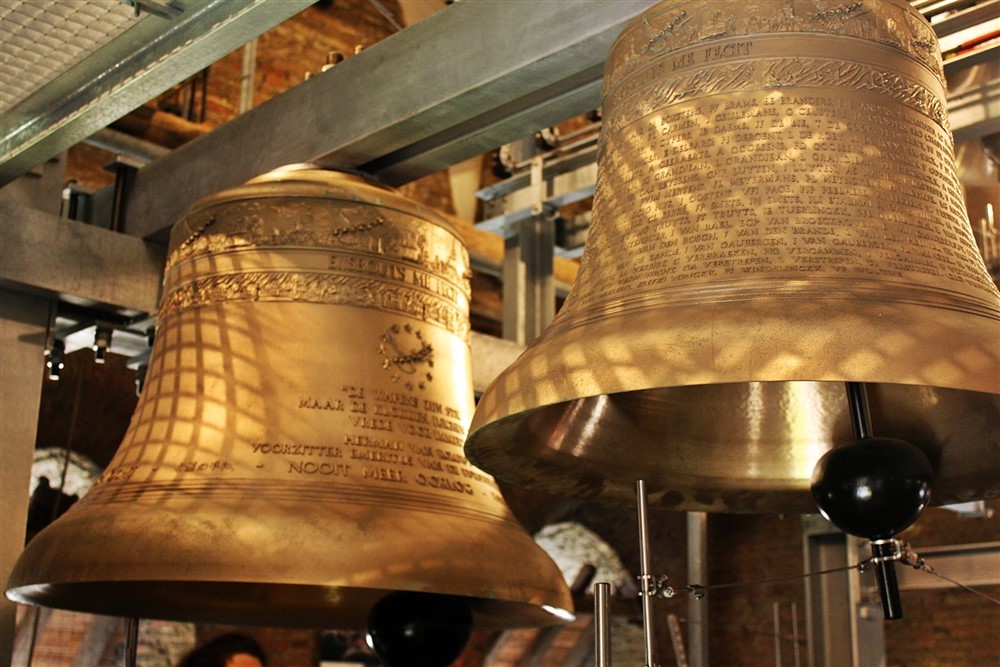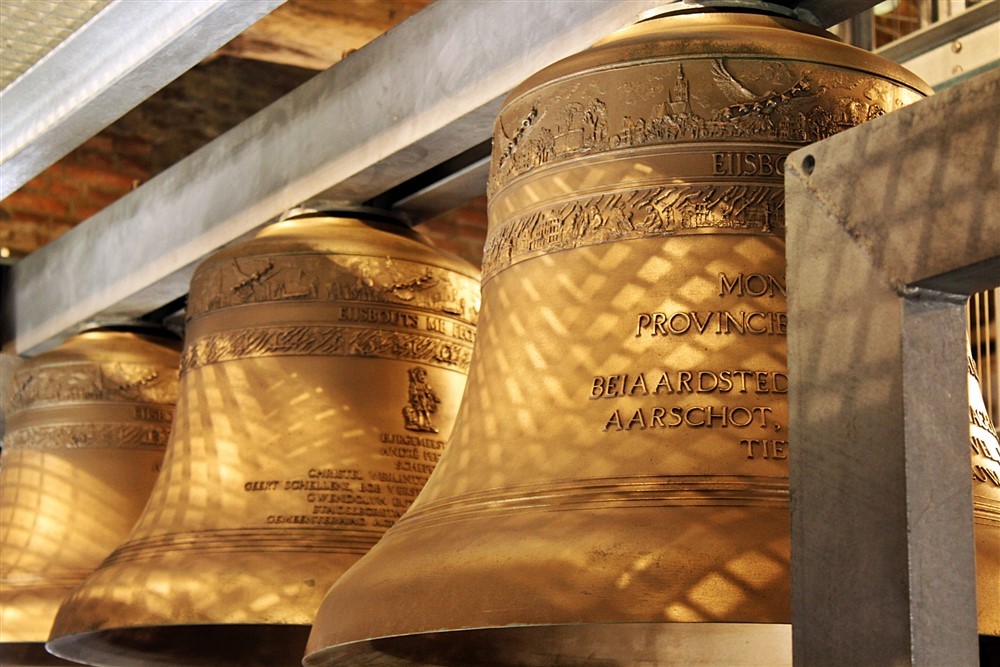Peace Carillon Aarschot
In Aarschot, on November 11, 2018, a new Peace Carillon for the Church of Our Lady was consecrated on the commemoration of "100 years end of the First World War".
Bells have often been the subject of war violence. In the ancien regime, they were destroyed to prevent them from being used to send signals. Bronze was always useful for the production of war material. In 1917, the Germans claimed the copper, but a well-organized clock robbery was difficult to gain. If in early 1918 the Germans were ready to do so, patriotic cardinal Mercier would protest vehemently in Belgium: "Whoever shoots at bells will not win the war."
In the war year 1943 of World War II, the three heaviest clocks were removed from the tower by the German occupiers. On the eve of the robbery, Aarschot citizens gathered in the church to ring the bells for the last time in protest. It was not until 1950 that there were enough funds to cast new bells and were hung in the tower a few days before Christmas.
The idea of a Peace Carillon as a memorial monument arose shortly after the First World War. After all, right from the beginning of that war - wrongly - German contempt for our culture was associated with deliberately shot carillons in Flanders. Church towers naturally fell prey to the violence of war, but certainly not because of that carillon. In September 1914, the French chansonnier Bonnaud created the song Les Carillons de Flandres. It became a cliché that was adopted by many poets, especially in the Anglo-Saxon countries. Just before the war, the Americans showed an intense interest in the Flemish carillons. These elements meant that after the war, carillons with the English-speaking allies stood for Belgian culture and resistance to the Germans. In these countries, carillons such as memory and tribute are therefore established.
In Aarschot, the new carillon was inaugurated on November 11, 2018, 440 years after the destruction of the last chimes during the wars of religion. The initiator was then Dean Huub Gerrits. Ten years were needed to work out the technique and especially to collect the necessary funds.
With 51 bells - a number referring to the number of countries that participated in World War I - and its wealth of nuanced tonalities, this carillon is a unique memorial. The bells were cast by the Dutch bell foundry Eijsbouts. All clocks bear two identical bands, depicting the city of Aarschot and the devastating flames of 1914. A haiku of former President of the European Council, Herman Van Rompuy, was applied to one of the clocks:
"The weapons are silent.
But the bells are cheering loudly.
Peace forever "
Do you have more information about this location? Inform us!
Source
- Text: Jan Rymenams
- Photos: Jan Rymenams
Nearby
Museum
- Stedelijk Museum, Room "War and destruction" Aarschot - Aarschot
- Allied Forces Museum Herselt - Herselt
- House of the Franco-Belgian Resistance - Tielt-Winge
Point of interest
Monument
- Memorial Onze-Lieve-Vrouwekerk Aarschot - Aarschot
- Memorial Stone Pieter-Jozef Dergent Aarschot - Aarschot
- Memorial Emile "Jules" Borremans Aarschot - Aarschot
Cemetery
- Belgian War Graves Aarschot - Aarschot
- Belgian Graves Veterans Aarschot - Aarschot
- Commonwealth War Graves Langdorp - Langdorp (Aarschot)





